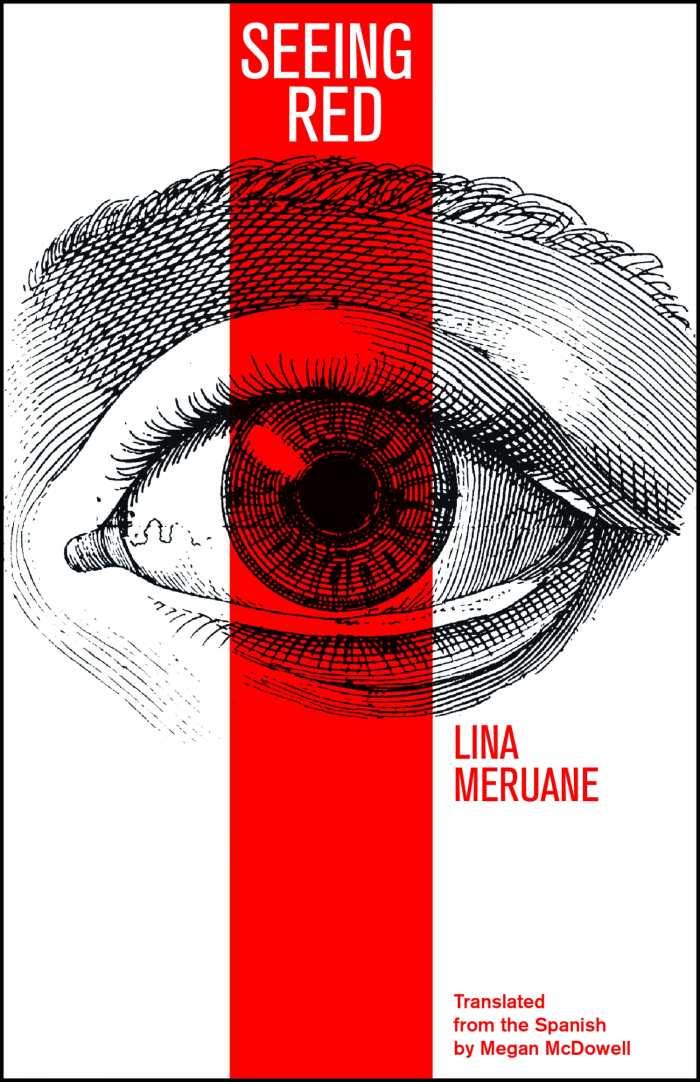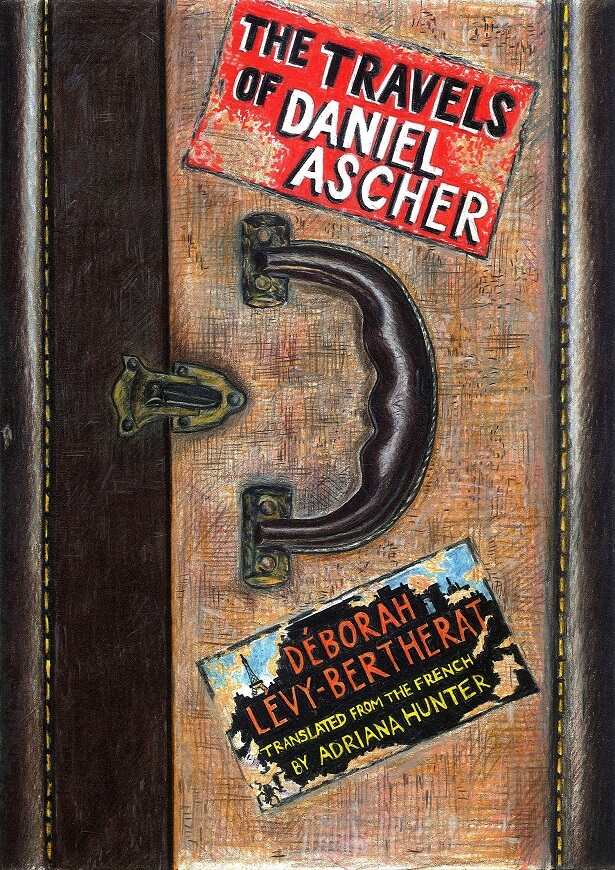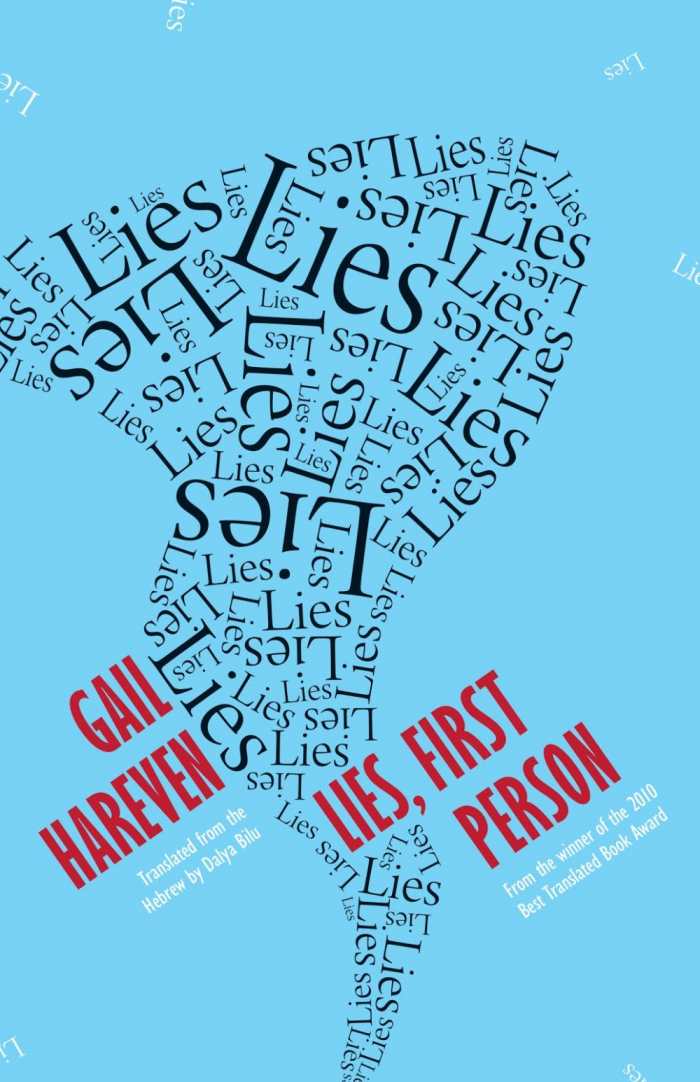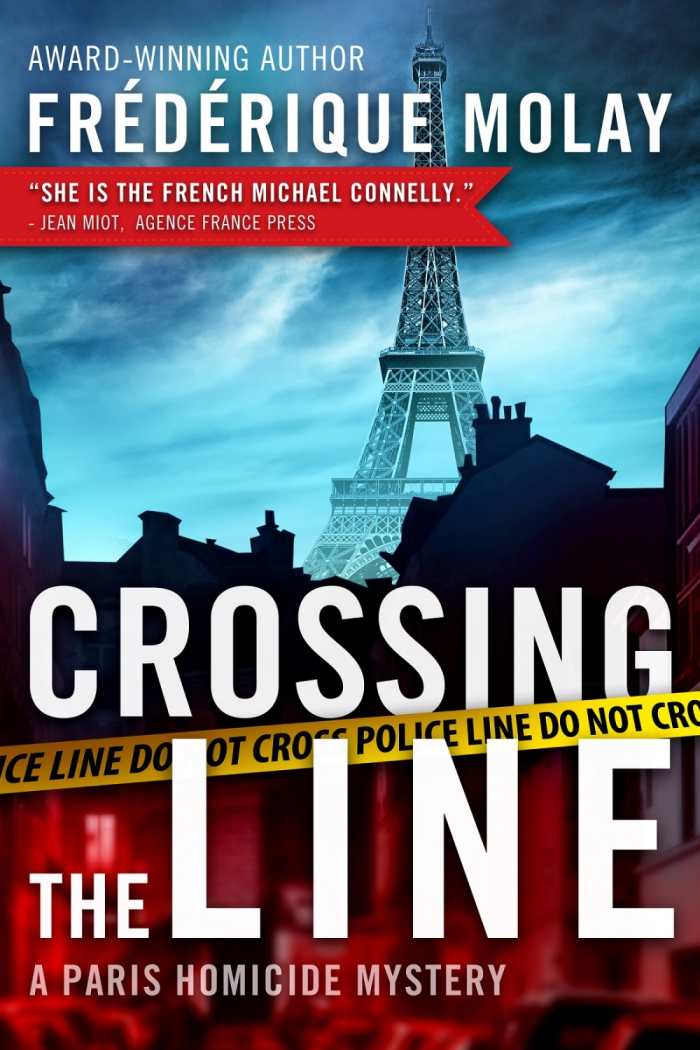Best Books for Women in Translation Month
August is Women in Translation month, a time when we turn our focus to translated works written by women. Women are less likely to be published than men are, and VIDA: Women in Literary Arts can back that up. Some are vowing to read only works by women authors (#ReadWomen). It’s an interesting experiment, but what about translated works? Only about 30 percent of newly published translations are written by women. If you’d like to participate in #WITmonth, here are some recommendations to get you started.
Seeing Red

Lina Meruane
Megan McDowell, translator
Deep Vellum
Softcover $14.95 (170pp)
978-1-941920-24-4
Buy: Local Bookstore (Bookshop), Amazon
A young woman may go blind, in this novel with a bristling, staccato torrent of vivid imagery from an acclaimed Chilean author.
Seeing Red, by Lina Meruane, dramatically introduces English-language readers to the acclaimed Chilean author.
The novel is based on Meruane’s experiences with diabetes-induced blindness. The main character shares her name and is also a graduate student recently arrived in New York City. The story plunges right to the action: Lina is at a party, and ruptured blood vessels flood one eye. Soon, another stroke dims her remaining eye, and she reckons with the possibility of permanent blindness and increased dependence on others. While Lina’s eyes heal, she awaits an operation to hopefully reclaim her vision, and she describes the upheaval in her relationships with her boyfriend and parents.
The writing is jagged, sharp, and direct, serving as a counterpoint to the careful movements and stillness prescribed for our heroine. Short chapters of dense blocks of text shape the novel into a bristling, staccato torrent of vivid imagery and psychological roilings. Meruane shares the most intimate, intense details of her harrowing story through her narrative, building tension towards the climax of her surgery.
Much of this slim novel can be read in metaphorical terms. Heightened awareness of Lina’s other senses and reevaluation of her life come when her visual faculties are ebbing. There are also numerous optical analogies. Her surgeon’s irritatingly pompous secretary, Doris, “spokeswoman of terror that she was,” opines that patients bear some blame for their ocular complaints, since “the retina [is] our life record, the mirror of our unfortunate acts, a perfectly polished surface that we spend our existence ruining.”
Lina’s chronicle is simultaneously disturbing and lyrical. When she travels home and hears a fellow passenger speak with a Chilean accent, it evokes a sensual encapsulation of her native land: “the glacial poems of the mountain peaks and their snows in eternal mid-thaw, the dark whisper of the south dotted with giant rhubarbs, the wail of roadside shrines, the herb-garden smell, the rough salts of the desert, the sulphurous copper shell open to the sky.”
Translator Megan McDowell has an excellent ear for Meruane’s prose and skillfully exposes its darkly humorous veins. Seeing Red is a captivating, multilayered debut from a strong young writer. Hopefully, more translations of her work will soon follow.
RACHEL JAGARESKI (February 29, 2016)
The Travels of Daniel Ascher

Déborah Lévy-Bertherat
Adriana Hunter, translator
Other Press
Hardcover $22.95 (192pp)
978-1-59051-707-9
Buy: Local Bookstore (Bookshop), Amazon
When Hélène Chambon, great-niece of author Daniel Roche, pen name H. R. Sanders, moves to Paris to study archeology, she encounters a mystery much more engrossing than her studies—one that not only involves her enigmatic, eccentric, world-traveling relative, but that threatens to shake all she believes about herself as well.
Hélène has always been embarrassed by her great-uncle’s wildly elaborate descriptions of his adventures. Although she has never read his Black Insignia adventure series, the devotion with which her friend Guillaume, a fellow archeology student, regards the books and their reclusive author arouses her curiosity. Following clues that include fake postmarks and a hidden room, Hélène learns of Paris’s dark underworld during the time of the Occupation, family secrets, and the power of stories to make us whole.
Lévy-Bertherat’s first novel is the haunting, powerful story of a mysterious man and the identities he assumes to deal with the losses and trauma of war, but it is equally about a girl who grows from a self-absorbed teen into a young woman whose inner world expands to include compassion for the pain and suffering of others.
Déborah Lévy-Bertherat teaches comparative literature at the École Normale Supérieur in Paris and has translated works by Lermontov and Gogol.
Adriana Hunter is the award-winning British translator of more than fifty French novels and a contributor to the international magazine Words Without Borders.
KRISTINE MORRIS (May 27, 2015)
Lies, First Person

Gail Hareven
Dalya Bilu, translator
Open Letter
Softcover $15.95 (370pp)
978-1-940953-03-8
Buy: Local Bookstore (Bookshop), Amazon
Hareven’s brilliant writing is simply irresistible as she traces two sisters’ emotional journeys through recovering from a childhood trauma.
In Lies, First Person, by Gail Hareven (translated from the Hebrew by Dalya Bilu), sisters Elinor and Elisheva have their lives changed forever when Elisheva is sexually assaulted by their uncle, Aaron Gotthilf. The powerful story of the aftermath reveals the emotional shroud wrapped around all who are associated with this heinous act. Eventually, madness, suicide, and lives set adrift drive Elinor down a path of revenge in this account of the effects of trauma on an ordinary family.
When the story opens in Jerusalem, the rape is buried deep into the subconscious pasts of both sisters. Elinor lives in a self-described “Garden of Eden” with her husband, Oded. Their two sons live in America, as does Elisheva, who has married. Elinor is happily ensconced in her husband’s extended family yet has nothing to do with her own since her mother committed suicide and her father left town and remarried. Uncle Aaron, whom Elinor variously refers to as Satan, the Not-man, and First-Person, calls Elinor; he wants to meet with her when he visits Jerusalem for a conference, where he will apologize for a book he wrote called Hitler, First Person. When the past begins to bubble up, Elinor slowly begins her descent into madness as she recalls what happened to her sister and her own failure to prevent it. With her paradise dissolving into nothingness, she makes a decision to right the wrongs that ruined her family.
Most of the power of this book lies in Hareven’s exquisite ability to portray the emotional transformations of the sisters. She digs deep to reveal the psychological troughs into which the sisters have fallen.
Lies, First Person is a gripping tale of trauma and its aftereffects that is full of religious undertones and references to Hitler that flesh out the main characters’ lives. The lurking question of whether Elinor will complete the task she sets for herself makes this story race to the spectacular denouement, leaving the reader breathless until the end.
DIANE PROKOP (February 27, 2015)
Crossing the Line
A Paris Homicide Mystery

Frédérique Molay
Anne Trager, translator
Le French Book
Softcover $16.95 (224pp)
978-1-939474-14-8
From the Paris setting to the autopsy scenes, Molay’s descriptions add believable imagery to this page-turner mystery.
Jewelry heists and murders keep police busy chasing the bad guys in Crossing the Line: A Paris Homicide Mystery, by Frédérique Molay. Clues and cadavers seem to pop up everywhere, forcing the detectives to poke their noses into some dangerous corners as they try to figure out who did it and why, in this entertaining murder mystery.
Chief Nico Sirsky is back on the job at the Paris Criminal Investigation Division following three months of grueling recovery from a leg wound he suffered at the hands of a serial killer. On the bright side, he’s fallen in love with Caroline, though his former wife is still missing. Nico is supposed to be prepping for the arrests of the thieves who got away with eighty-five million euros of jewelry, when a very strange case drops into his lap. Students dissecting heads over at the body donation lab find a note lodged in a cadaver’s tooth, and it seems to point to murder rather than suicide. Or it could be a prank by medical students. Nico and his colleagues are led down a path filled with medical malfeasance and perps who aren’t afraid to kill off anyone who gets too close.
Molay leaves no cobblestone unturned when describing the beautiful Paris backdrop and its history. “The Rue Thiron was wide but short, lined with trees and perpendicular to the Rue de Rivoli and the Rue François Miron. The former was known the world over, but who knew that the latter was where King Louis XIV, the Sun King, had lost his innocence to a lady-in-waiting nicknamed One-Eyed Kate?” This kind of embellishment enriches the story and makes it fun to read.
Although the story drags a little in the beginning while Molay sets the stage, it speeds up nicely when she inserts a series of plot thickeners that give the story complexity and depth. When more dead bodies, puzzling clues, and conflicting character motivations get thrown into the fray, the action heats up, and the book is suddenly a page-turner.
Francophile mystery lovers who are also fans of police procedurals will find Crossing the Line, the second in the Paris Homicide series, a satisfying read. It’s a novel to be devoured in one sitting with the lights on.
DIANE PROKOP (November 27, 2014)
I Called Him Necktie

Milena Michiko Flasar
Sheila Dickie, translator
New Vessel Press
Softcover $15.99 (140pp)
978-1-939931-14-6
Buy: Local Bookstore (Bookshop), Amazon
This minimalist narrative exquisitely conveys themes of connections within the Japanese culture.
I Called Him Necktie is an elegant and moving story about two very different people who, by keeping secrets, begin to disconnect from others. In this touching story, a friendship develops between a twenty-year-old shut-in and a businessman as they sit opposite one another in the park.
Takei Hiro is a hikikomori, a Japanese youth who lives with his parents but spends most of his time shut in his room, keeping contact with others to a minimum. One day, when Hiro is in the park, sitting on the bench he has taken to occupying daily, he observes Ohara Tetsu, a man in his fifties, sitting on the bench opposite him. He inspects Tetsu’s tie—its colors and pattern, the way Tetsu loosens it and throws it over his shoulder to eat his lunch. Hiro decides to call Tetsu “Necktie.” Eventually, after this routine of sitting opposite one another daily in the park, the two make eye contact and begin to talk. Their conversation reveals stories of their past and present, the secrets, traumas, guilt, and shame that led to them sitting on the bench.
As Hiro and Tetsu begin to share the secrets, they become allies, and Hiro slowly begins to reconnect with the world around him. This exposition of two people going through a life crisis deftly reveals the Japanese culture’s importance of appearance of decorum and saving face; for example, Tetsu keeps a secret from his wife, continuing to accept the lunches she makes and keeping up the appearance of going to work daily.
Japanese culture permeates the story, not only through the measured use of words and phrases (which are explained in the glossary at the back of the book), the description of Hiro’s interaction with his parents, or Tetsu’s food, but also in the style of the narrative itself. The minimalist style and calm pacing of the narrative reveal a depth of emotion behind the controlled exterior. An example of the simplicity of the wording and evocative imagery appears in the description of Hiro’s friend, Yukiko, a young girl and victim of bullying, whose name has been written under a picture of a pig: “She wiped it off, stroke by stroke. Yukiko became Yuki. Yuki became nothing.”
Clean, crisp images further offer a simple beauty and elegance that lends a hypnotic, meditative quality to the reading experience. Short sentences, with their rich choice of words, such as “Silence has a body. It is alive,” lend a contemplative quality to the engaging story.
MAYA FLEISCHMANN (August 27, 2014)
Sworn Virgin

Elvira Dones
Clarissa Botsford, translator
And Other Stories
Softcover $15.95 (256pp)
978-1-908276-34-6
Buy: Local Bookstore (Bookshop), Amazon
A glimpse at how sworn virgins allow women to have some semblance of independence in Albania, even if it means giving up most of their identity.
Identity, culture, and tradition get both honored and skewered in Elvira Dones’s English debut, Sworn Virgin. In recounting the story of Hana Doda, an independent woman in male-dominated Albania, Dones explores the fascinating history of “sworn virgins,” those women who take on male roles in order to reject arranged marriages. With sensitivity toward a compelling main character, the author provides a fascinating story that offers a window into Albanian culture.
When the novel opens, Hana has already spent time living as a man and has emigrated to America, where she’s thrown into confusion over her place in the world. Still wearing the slightly oversize clothes of her mountain village, Hana encounters a country that’s completely unfamiliar, but it’s her own landscape where most of the attention is centered.
She’d agreed to become a man in appearance and manner, as dictated by the customs of her village when she refused an arranged marriage, but when faced with the opportunity to “turn back into” a woman, she wrestles with what gender really means.
In telling Hana’s story, Dones uses a third-person perspective, along with present tense, and she occasionally dips into the second person to relay Hana’s thoughts. The effect can sometimes be uneven but often works, creating a sense of immediacy within the story. For example, when she first transitions to becoming a man, calling herself Mark, she tries to make her gait heavier and more masculine and curses her own impatience: “Don’t run, don’t make a noise, don’t think,” she writes. “There’s no hurry. Not anymore. There’s all the time in the world, nobody is waiting for you. You don’t have to worry anymore about how soft your hair is; you don’t have to worry about finding nice clothes.”
Using that style draws the reader into Hana’s world and allows Dones to create a fascinating stream-of-consciousness perspective that pairs with the character’s attempt to become Mark. Just as the reader tries to identify with Hana’s struggles, the character herself is laboring to identify with all the men she’s known.
Artfully written by one of Albania’s most distinguished authors, Sworn Virgin is a story that resonates far beyond one country’s borders.
ELIZABETH MILLARD (May 27, 2014)

Hannah Hohman is associate editor at Foreword Reviews. You can contact her at hannah@forewordreviews.com.
Hannah Hohman
